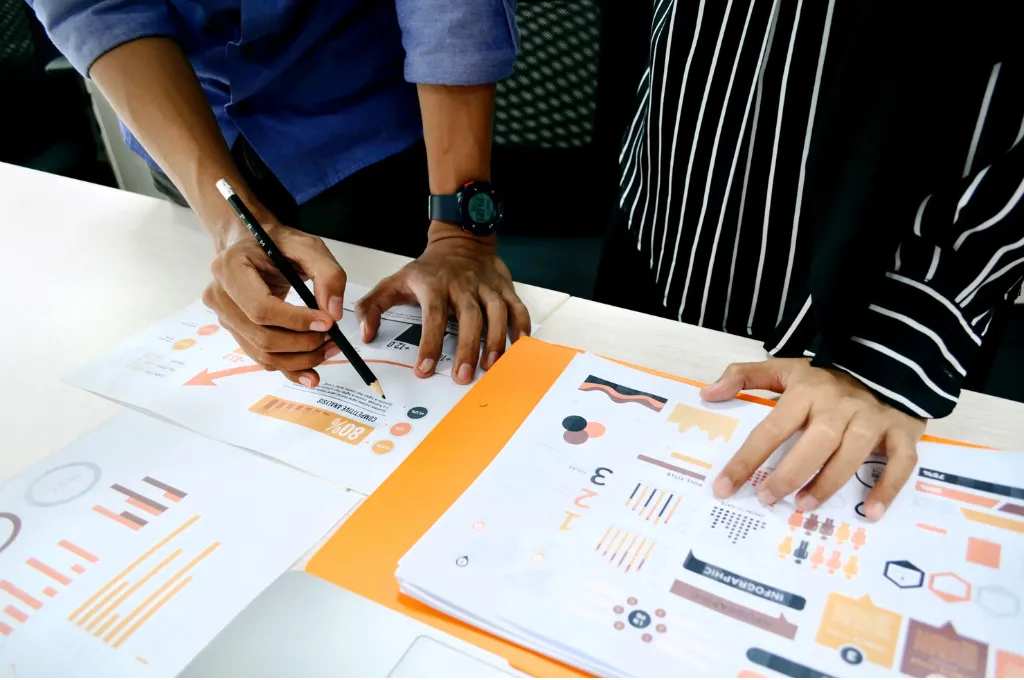The growing need for marketers to have an image strategy that ticks all the right boxes with the potential customers led to the implementation of CGI in the world of product marketing. While the incorporation and benefits of CGI are soaring, there is always a pertinent question- what and how much makes up the CGI cost?
In this blog, we will discuss the benefits of CGI to product marketing, why companies are switching to CGI, and what are the factors that affect the cost of CGI.
Introduction To CGI
Impactful visual content holds power to change customer’s perceptions of your product and brand. But what makes images so easy to understand? The answer is that the human brain is designed to discern the world visually.
Since the early 1970s, CGI has played a crucial role in enabling product marketers to present their products in an extraordinary way. At that time, pioneers started utilizing CGI’s capabilities to produce astonishing visual representations of their products.
Throughout the years, numerous examples have showcased CGI’s influential and captivating power on audiences. One such notable milestone was set by Apple back in 1984 when it advertised its Macintosh device by creating a visually striking dystopian setting using CGI.
CGI has gained significant popularity in the marketing and advertising industry for its remarkable capability to augment product presentations and showcase products from diverse angles and perspectives. Marketers leverage CGI to elevate their brand’s online presence by creating captivating visual content that compels viewers to act.
Why Companies Are Choosing CGI Over Traditional Photography For Their Product Visual Requirements?
Many companies are transitioning from traditional photography to CGI for their product visual requirements due to the numerous advantages offered by CGI. Prominent brands such as IKEA, Lowe’s, Home Depot, and Target Retail have embraced CGI to provide customers with engaging and immersive experiences.
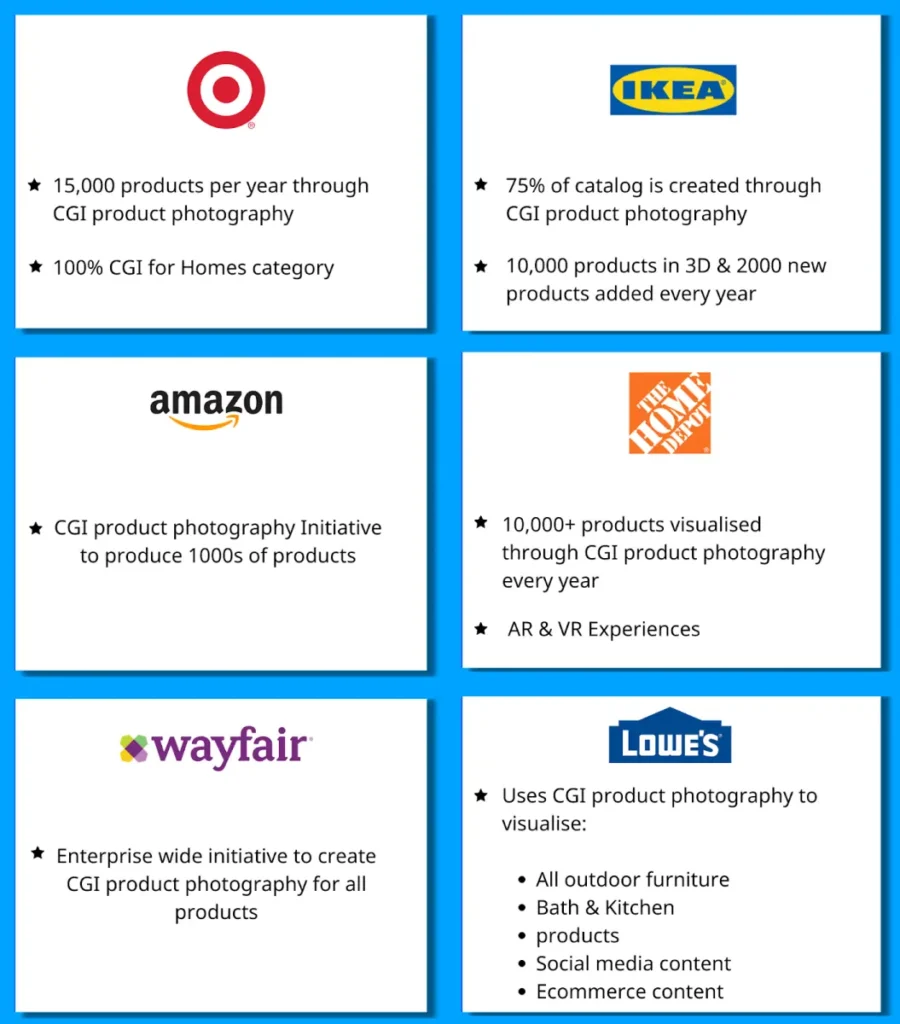
IKEA, for example, utilizes CGI beyond mere product visualization. They employ CGI to create virtual room sets, enabling customers to visualize furniture and home decor products within a realistic home environment.
Moreover, they have developed a mobile app that utilizes AR powered by CGI. By simply using their smartphones, customers can see how the product will look in their homes or offices.
Another notable example of a brand leveraging CGI is Lowe’s Home Improvement. They employ CGI to create virtual design tools that empower customers to visualize how different home improvement products will appear in their homes.
Moreover, CGI aids Lowe’s in showcasing a product’s functionality and features, helping customers understand how it will work and its benefits.
Leading brands like IKEA, Lowe’s, and Target Retail rely on CGI to enhance their business strategies. This helps them in the following ways:
- Boosting Brand Value: CGI can increase brand value by enhancing visual appeal and boosting product realism. It ensures visual content consistency in the brand’s identity and allows businesses to customize their product as per users’ requirements. As a result, they can increase customer engagement and loyalty, resulting in business growth and success.
- Increasing User Engagement: Product marketing and ad campaigns have a single most important goal- to amaze online visitors so that they become customers. CGI helps with achieving this goal. Using CGI, designers can create product images, interactive ads, virtual rooms, and more to delight customers by providing an interactive product experience that leaves a long-lasting impression. CGI can help brand build their confidence among customers and gain loyalty.
Now, let us examine why industry leaders switch from traditional photography to CGI for their product photography and videography requirements.
- Customization: Unlike traditional photography, where changing certain aspects of a photograph requires reshooting in a different environment, CGI provides extensive customization options.
With CGI, product photographs can be created and tailored to meet specific requirements, allowing for the customization of textures and materials that can be applied to the product.
Designers can customize lighting in CGI, adjusting the color, brightness, and direction of light sources to achieve the desired effect. Additionally, CGI enables the customization of camera angles, which can be utilized to highlight specific aspects of a product or scene. - Cost-effectiveness: Compared to traditional product photography, CGI offers a cost-effective alternative. Traditional product photography involves significant investment of time and money, including expenses for shoot locations, professional photographers, expensive equipment, high-quality cameras, lighting devices, shipping, film, processing, and maintenance. All these costs can add up substantially.
On the other hand, CGI proves to be a more cost-effective method. It eliminates the need for physical sets, reduces the production cost, and promotes asset repurposing. By leveraging CGI, brands can significantly reduce overall cost while still obtaining high-quality photos and videos. - Reusable Assets: In traditional photography, the captured images of real-world scenes and objects are limited to a single physical asset. It can not be altered or used in a different context without any digital manipulation.
However, once products are modeled in CGI, they become versatile assets that can be reused and repurposed as needed. This is also helpful when the organization plans to rebrand itself and requires updated product photography, such as during rebranding efforts that demand product photography adhering to specific standards.
In addition to ensuring consistency across various projects and improving the overall quality of the CGI content, reusable assets save time, resources, and money in the long run. This results in an efficient workflow and quicker turnaround times. - Unhindered Conceptual Limits: Traditional photography is inherently limited by its conceptual boundaries, as it relies on physical objects to bring visions to life. This means that not everything one envisions can be fully realized through traditional photography methods.
In contrast, CGI eliminates these conceptual limitations by allowing for the creation of virtual environments and objects. This gives designers the freedom to create anything they envision. They can explore new ideas and concepts that would have been impossible to achieve in real life.
CGI offers creators and designers a virtually limitless canvas that they can use to experiment with new ideas without being restricted by the physical world’s limitations. - Greater Control: In traditional photography, ensuring consistency through every photograph is impossible due to uncontrollable environmental factors such as lighting, shadows, and reflections. Furthermore, traditional photography can take weeks or months, meaning environmental aspects may/may not change. This limits the control over the output of traditional photographs.
However, CGI eliminates these limitations by granting designers complete control over every aspect of the design process. From conceptualization to finalization, CGI allows designers to manipulate every element without being affected by environmental factors. They can manipulate every design element, from the lighting and camera angles to the color palette and textures, to achieve the desired result. Any mid-production modification can be incorporated on the fly, helping designers refine their ideas quickly and efficiently. - Time Efficient: Unlike traditional photography, which involves shipping physical products to physical sets and creating the necessary environment, CGI streamlines the entire process digitally. In traditional photography, the products are manufactured in different regions, and the average lead time to shipping, staging, and waiting for the right conditions for photography can take approximately 3 months.
This is not the case with CGI, where everything from creation to post-production is done digitally. This results in faster iteration and revision cycles. Rendering in CGI is also faster compared to traditional photography. Additionally, CGI allows for the use of reusable assets, saving time and effort in creating new assets for each project. Furthermore, automated workflows can be implemented, further enhancing efficiency. - Cross-Platform Compatibility: To effectively engage with your audience, it’s crucial as a marketer to ensure your website or eCommerce store is accessible across various devices.
Traditional photography falls short in this aspect as its compatibility largely depends on the camera and film being used, making it challenging to provide a consistent brand experience across platforms. Furthermore, the process of developing and printing film is specific to the type of film being used.
This is where CGI has an advantage. It is designed to work on multiple operating systems, so designers don’t have to worry about compatibility issues. Furthermore, CGI supports many file formats like OBJ, FBX, and STL, which are compatible with most 3D modeling and animation tools.
Steps For Creating Product Visuals Using CGI
Creating product visuals using CGI involves the following steps:
- Step 1: Generate a 3D model of the product: The first step is to create a 3D asset for the product. Two versions of 3D assets can be created: High Fidelity 3D assets and low-fidelity 3D assets. High-fidelity 3D assets are characterized by their high polygon count, high-resolution texture, and are highly detailed. Low-fidelity 3D assets, on the other hand, have low polygon count and small file sizes and are made to offer AR/VR experience.
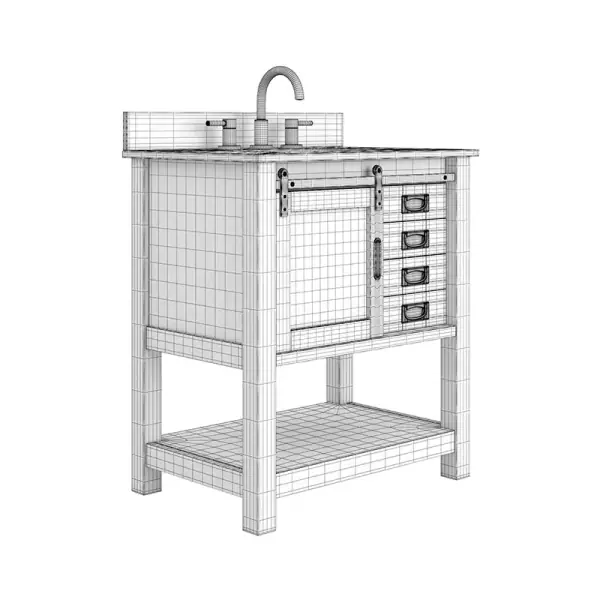
- Step 2: Generate visual content using the 3D model: Once the 3D models are created, they are utilized to create a wide range of visual content like white background silo images, lifestyle images, 360 spins, and AR/VR experiences.
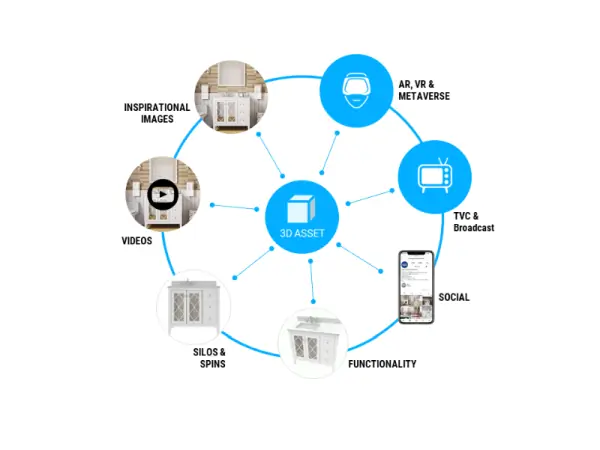
What Factors Affect The CGI Cost?
Now that we know the benefits of CGI, due to which an increasing number of companies are making the switch, let us discuss some factors affecting CGI costs.
- Complexity: Complexity is one of the most significant factors that affect the CGI cost. The intricacy of the product model directly correlates with the time required for its creation, resulting in higher prices for 3D rendering. The level of detail and complexity involved in a CGI project necessitates the involvement of skilled professionals such as artists and technicians, further impacting the project’s completion time and cost.
For example, rendering product images for watches or jewelry will take time as it has highly detailed texture and profound intricacy. This will take more time and expertise than designing a simple 3D object like a table or bottle. This increased complexity requires more attention to detail throughout all production phases, leading to higher costs.
The level of interactivity also affects complexity in case interactive animations have greater demands for programming which in turn adds to the cost. - Production Time: Timing is crucial when it comes to creating computer-generated imagery. The time spent creating projects that meet clients’ expectations contributes to higher costs due to the labor-intensive efforts involved.
Professionals meticulously work on every aspect of the project, including modeling, texturing, lighting, rigging, animating scenes, and other necessary tasks. The more complex and detailed the animation or model, the more time it will take to complete it, ultimately affecting the overall cost. For example, products like cosmetics, or jewelry will take longer time due to the precision in ensuring correct lighting, reflection, and shadow. - Corrections & Iterations: Once the initial render is completed, any necessary changes or adjustments can be made. These corrections can range from minor improvements to major modifications and can significantly impact the overall cost.
There are several reasons why corrections might be necessary. For example, corrections may need to be made if there is an error in the provided input or if certain details are overlooked during the initial rendering process. Furthermore, clients may request changes based on personal preferences or new design ideas that arise during production.
While some correction level is often expected in any CGI project, excessive revisions can quickly increase the costs. Therefore, it is important to establish clear communication between clients and CGI artists regarding expectations and goals before commencing a project.
The realism of an image greatly depends on the accurate and believable depiction of shadows, which requires skill and attention to detail, impacting the cost of CGI. Different types of light sources generate different types of shadows, each requiring a unique approach. For example, a soft light source produces diffused shadows with blurred edges, while a hard light source creates sharp, well-defined shadows.
Moreover, the position of the light source plays a crucial role in affecting the angle at which the light source will create sharp and defined shadows. The distance between the object and the shadow also influences the darkness or faintness of the shadow.
Making revisions to adjust the shadow entails additional time and resources, ultimately affecting the cost. - Final Resolution: The final resolution of a CGI project determines the ultimate quality of the output. It can vary from low-resolution images suitable for web usage to ultra-high-definition visual effects intended for cinema screens.
It’s important to note that higher resolutions require more time and effort from artists and designers, resulting in higher costs. Therefore, if you require a high-quality final resolution for your project, it will involve additional expenses.
Moreover, certain industries may have specific requirements for resolving their CGI outputs. For instance, architects may need high-definition 3D renders to effectively showcase intricate details of a building, while product manufacturers may require multiple views at different resolutions.
Considering your desired final resolution during the initial planning stages is crucial as it allows you to allocate the appropriate budget and ensure the delivery of tailored deliverables that meet your specific needs. - Provided Input: The input provided by clients for CGI projects includes essential resources and materials such as 3D models, textures, sketches, and visual references. Clients who provide comprehensive input can save time and money in creating CGI projects.
The level of detail and precision in the input directly impacts the time required for artists to produce accurate representations of the products.
Conversely, clients who fail to provide clear instructions for their projects may need additional consultations with CGI artists, leading to increased costs due to longer production times. Furthermore, incomplete information can lead to misinterpretations or errors during production, necessitating corrections that add to the overall expenses.
By offering complete and concise input, clients ensure smooth collaboration with CGI artists and facilitate efficient workflows, ultimately leading to successful outcomes within budget constraints. - The Number of Product Views: The overall cost of a CGI project is influenced by the number of views required to showcase the product. The more angles and perspectives needed, the higher the cost will be.
Each view necessitates separate modeling, texturing, and lighting adjustments to ensure optimal visual quality. This process is time-consuming and may require additional resources.
The cost can also increase if multiple products have to be showcased from different angles or combined into one image through different techniques.
However, it is important to consider multiple product views. They give customers an accurate representation of the product, enabling them to visualize its appearance in their homes or workplaces. This will help them make informed decisions about their purchase. - Types of product visuals required: The cost of creating product visuals depends on the specific type of visual you wish to develop. For instance, if you want to create a white background image, the cost will be lower than producing a video showcasing a storage unit with highlighted features.
The video production entails additional expenses as artists must focus on capturing close-up views, emphasizing textures, and showcasing patterns, resulting in a higher cost than a basic white background image. - Close-up view: The level of detail and clarity required in an image’s specific area determines the attention it needs. When an object needs to appear closer, it necessitates a higher level of intricate detail, subsequently increasing the overall cost.
Creating a close-up view entails adding meticulous details such as textures, patterns, and colors. Artists spend hours or even days generating these realistic details. The extent of intricacy varies depending on the product being advertised.
For example, when creating CGI images for jewelry or watches with intricate detailing and small components, a higher resolution modeling is required compared to products like furniture pieces, where specific features don’t require as much meticulous attention. - Style Reference: Style reference is a crucial component clients provide to CGI service providers, outlining their desired visual content. It plays a pivotal role in determining the cost of CGI. The complexity and uniqueness of the requested style directly influence the amount of time and resources needed to fulfill the requirements.
Occasionally, style references may undergo modifications during the course of a project, which can have a notable impact on the cost. Significant changes in the style reference can result in delays and necessitate additional work, thereby increasing the overall expenses involved.
- Number of SKUs: The number of product variants directly influences the cost of CGI. Each variant requires a separate 3D model, increasing the complexity and volume of 3D modeling work. As a result, resources and time invested in the CGI process are amplified, resulting in higher costs. Moreover, the number of product variants can also affect licensing terms, potentially necessitating additional permissions for each variant, further increasing the overall cost.
- Additional Services: The cost of CGI can also be affected by including supplementary services and the main factors. Custom sound effects, voiceovers, music composition, and stock footage licensing fees are some of the elements that contribute to the budget.
Other than the factors mentioned above, the cost of CGI can also vary with the geographical location and the type of visual being created. It can range from a few hundred dollars per SKU for simple products and basic images (like white background, close up) to a few thousand for complex products and advanced requirements like videos, ar/vr.
Looking For Product Visuals For Your eCommerce Store? House Of Blue Beans Can Help
House of Blue Beans will be your one-stop shop for all CGI requirements. We have been helping leading brands like Honeywell, Henkel, Lowe’s, and Target Retail with our cost-effective, premium-quality CGI solutions for over a decade.
Trusted by Industry Leaders
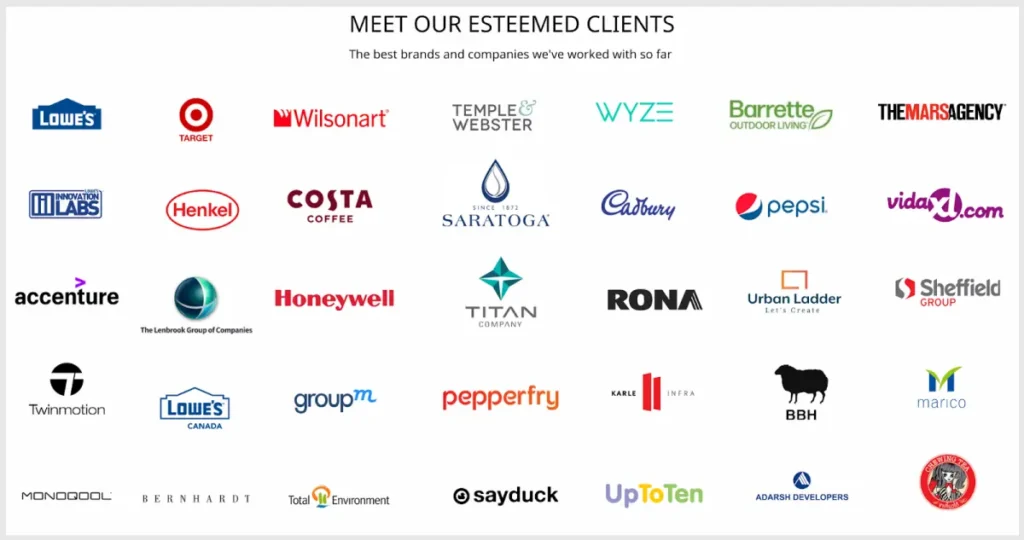
We believe there should be no limitation to how you present and make your products interact with the customers. This is why we implement our cutting-edge CGI technology and the knowledge and expertise of our CGI artists to help you create stunning and photorealistic visuals.
Our goal is to work as your ultimate CGI partner and guide you through the process of creating engaging visual content that will enhance your customer experience, increase sales, minimize returns, and increase profit.
What Do We Offer?
We work towards enhancing customer experience by showcasing the product in context and demonstrating how the product will look in a real-life setting. To ensure this, we secure the services of CGI experts who create accurate, detailed, and informative visual content.
From plain white background images, lifestyle images, videos, and interior and exterior rendering of architectural visual content, our CGI specialists have got your back in creating realistic and visually interesting content that makes the product visually appealing and engaging. With House of Blue Beans, you get
3D Asset Creation: Take your product design to the next level with us by creating stunning and high-quality visual content. Our CGI experts have over a decade of experience in building 3D models and giving texture to them in a way that perfectly balances aesthetics and functionality. We can create CGI visual content that will make your brand stand out from the crowd.
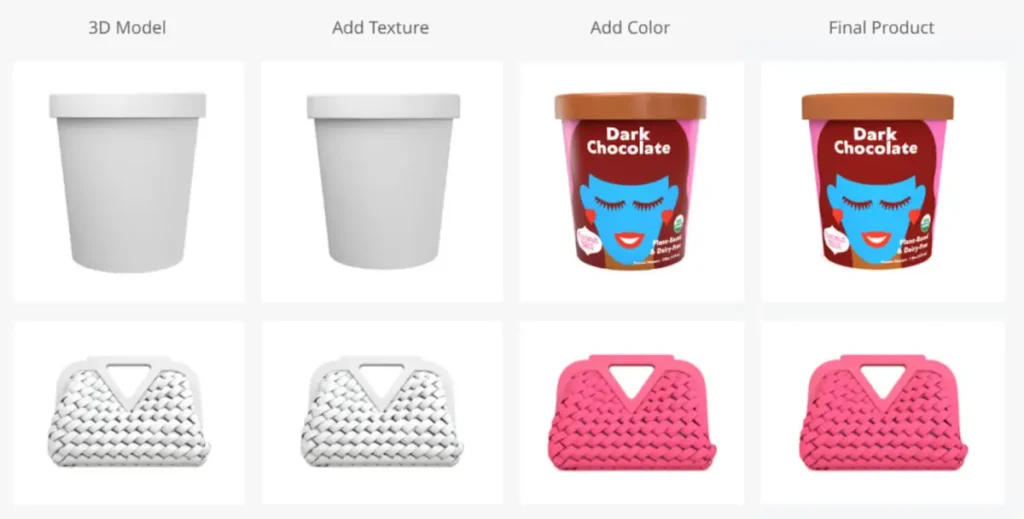
Product Visualization: Get visually stunning and engaging product visualizations with House of Blue Beans. With us, you can create lifelike product images and animations that effectively demonstrate your product’s features and benefits. Whether you want a white background image, a lifestyle image, or a 3D model, we will ensure your product is well-represented. With our attention to detail, we will ensure that your product visualization is beautiful and informative.
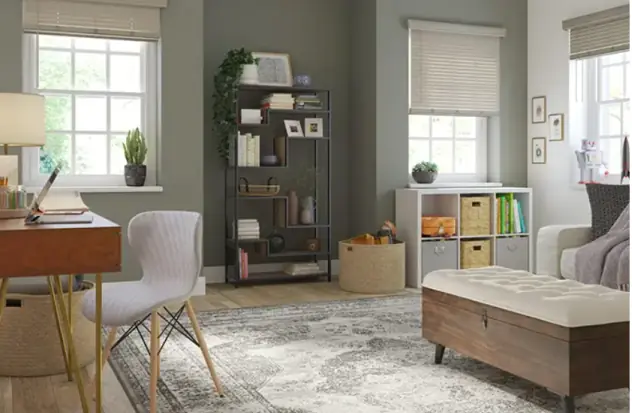
Architectural Visualization: Unlock the full potential of your design ideas and communicate your vision with clarity and precision with our visualization. We secure the service of 3D architectural visualization experts to help you explore the designs before they are built, thereby saving you time and money. With us, you can rest assured that your design process will be taken to the next level in a way you have never imagined.
AR/VR Experience: House of Blue Beans will help you create an immersive and unforgettable experience with best-in-class CGI solutions for AR/VR experiences. By using cutting-edge technology, we will transport your customers to an entirely new world where they will interact and engage with products and services they have never imagined. Our CGI experts will ensure that your brand message is well reflected through your product by creating customized AR/VR experiences. Leave a lasting impression by taking your audience on a journey they will never forget with House of Blue Beans.
Why Choose House Of Blue Beans?
We have your back no matter what kind of visual content you want- a photorealistic image or an immersive animated video. With us, you can rest assured that you will get premium-quality and cost-effective CGI content at an affordable range. House of Blue Beans assures you the following:
- Top-notch Quality: We take immense pride in delivering high-quality CGI solutions to industry leaders like Lowe’s, Henkel, Honeywell, Target, and more. All our services occur in a digitally controlled environment, ensuring consistency throughout the image series.
- Cost-effective: With us, you will get premium quality CGI visual content service at ¼th of the cost of the traditional methodology. We use the latest CGI technology, so you don’t have to worry about the shipping cost, creating expensive sets, props, or product damage.
Furthermore, the overall cost is significantly reduced since we reuse the same 3D model to create different visual content like white background images. - Turnaround Time: No matter what kind of visual content you want, we will deliver it to you within 2 weeks, unlike the traditional methodology, which can take up to 3 months. You can save 80% of your time with us since we use proprietary visual content management software, simplifying collaborative content development and asset management.
You don’t have to believe what we say. See our client reviews that speak of our work!
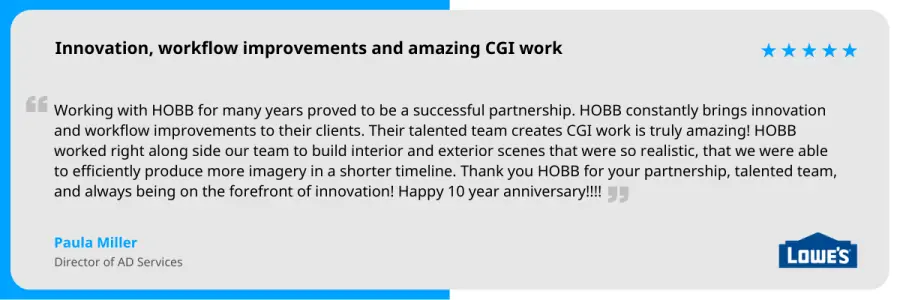
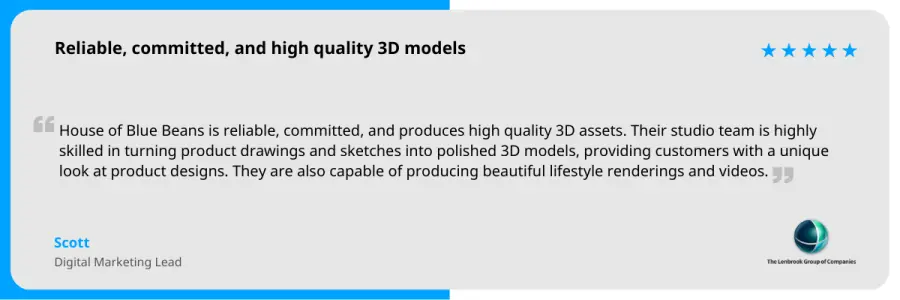
So what are you waiting for?
Let us help you showcase your products and their design with our revolutionary CGI methodology, with which you can showcase your product’s stunning detail. Whether you are looking to implement CGI for product demonstrations or advertising campaigns, with our CGI services, the possibilities are endless.
